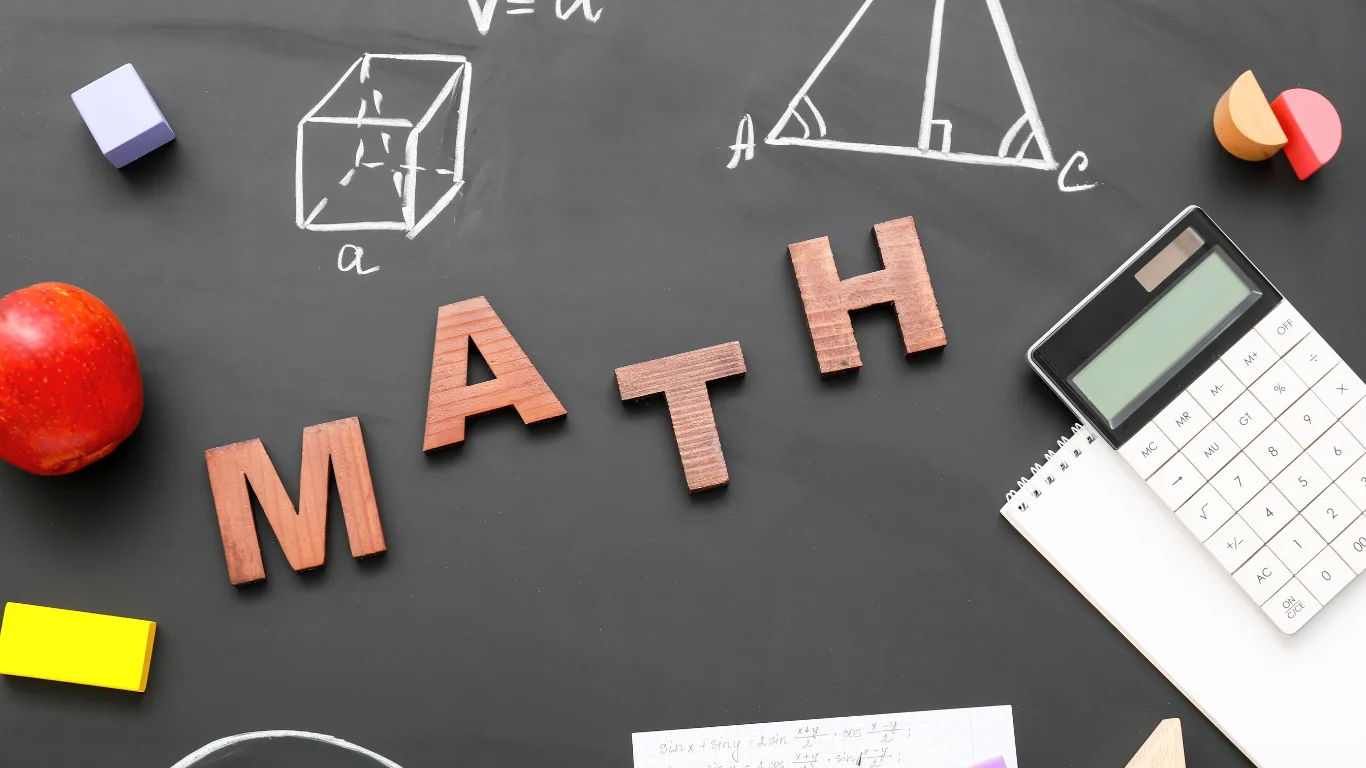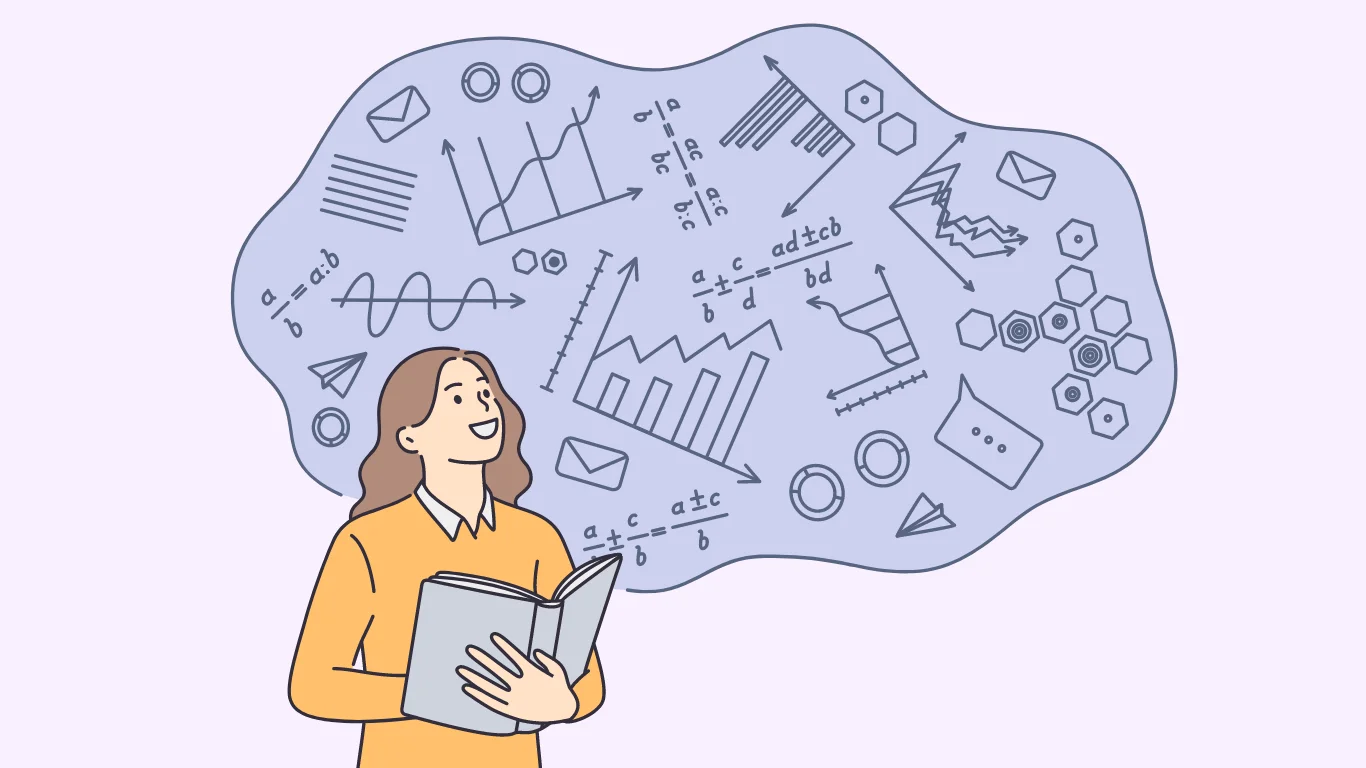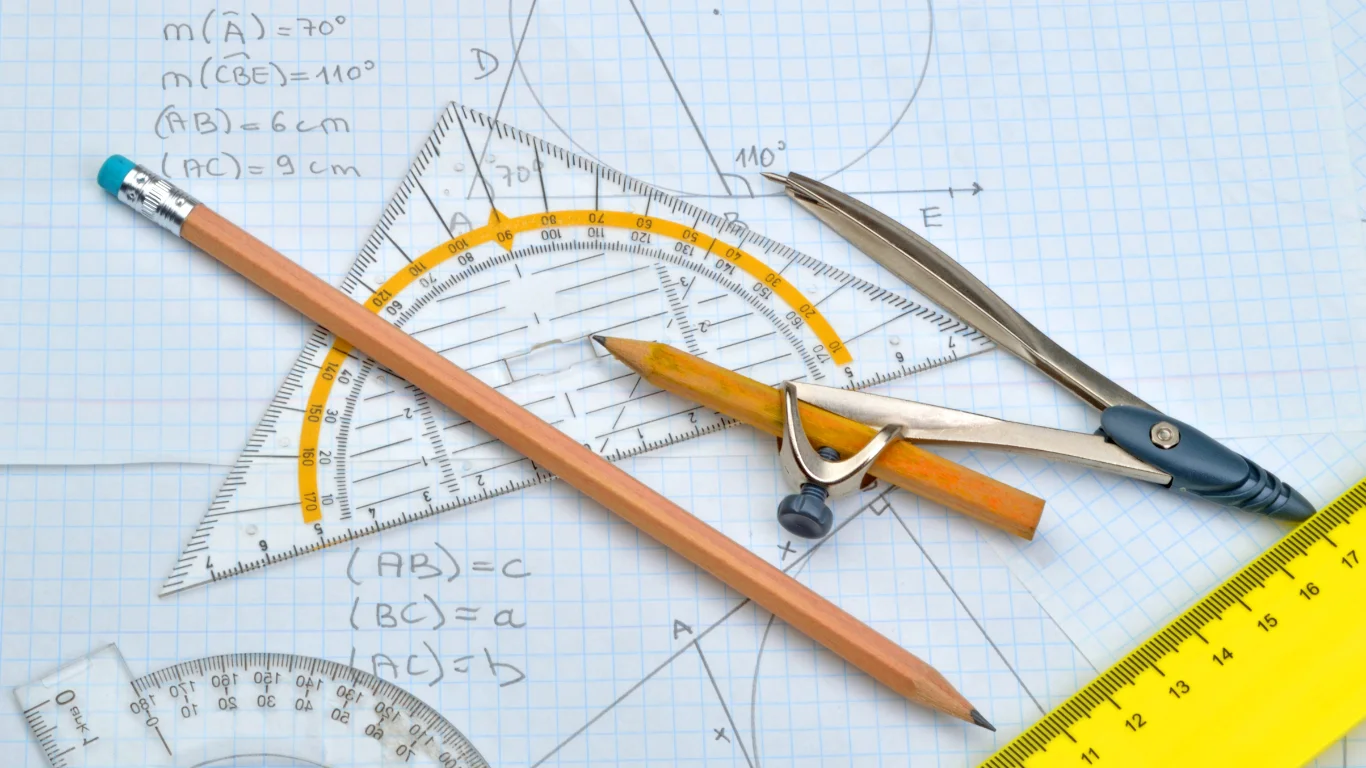
This comprehensive blog post will cover everything one needs to know to ace the WACE Mathematics Essential exam.
Whether you are a diligent student looking to maximise their performance or a concerned parent seeking to support their child's academic journey, this guide will equip readers with the knowledge and strategies to succeed.
Summary of Units
Below we will cover Units 3 and 4 in Year 12 - Mathematics Essential and all the sub-topics you will need to understand to do well on your Mathematics Essential exam:
Unit 3
This unit focuses on practical problem-solving skills in measurement, scales, plans and models, graph interpretation, and data collection. Students apply mathematical thinking and statistical investigation processes to real-world contexts, such as construction and medicine.
This unit emphasises the use of technology and covers various number formats including decimals, fractions, percentages, rates, ratios, and powers. By presenting content in meaningful contexts, it aims to develop students' ability to flexibly apply mathematical concepts to practical situations, preparing them for both the exam and real-life challenges.
Topic 3.1: Measurement (15 hours)
Linear measure
3.1.1 extend the calculation of perimeters to include polygons, circles and composites of familiar shapes
Area measure
3.1.2 calculate areas of parallelograms, trapeziums, circles and semi-circles
3.1.3 determine the area of composite figures by decomposition into familiar shapes
3.1.4 determine the surface area of familiar solids, including, cubes, rectangular and triangular prisms,spheres and cylinders
3.1.5 use addition of the area of the faces of solids to determine the surface area of composite solids
Volume and capacity
3.1.6 recognise relations between volume and capacity, recognising that 1 cm3 = 1 mL and 1 m3 = 1 kL
3.1.7 calculate the volume and capacity of cylinders, pyramids and spheres

Topic 3.2: Scales, plans and models (15 hours)
Geometry
3.2.1 recognise the properties of common two-dimensional geometric shapes and three-dimensional solids
3.2.2 interpret different forms of two-dimensional representations of three-dimensional objects, including nets and perspective diagrams
3.2.3 use terminology of geometric shapes; for example, point, line, angle, diagonal, edge, curve, face and vertex, parallel and perpendicular
Interpret scale drawings
3.2.4 interpret commonly used symbols and abbreviations in scale drawings
3.2.5 determine actual measurements of angle, perimeters and areas from scale drawings
3.2.6 estimate and compare quantities, materials and costs using actual measurements from scale drawings, for example using measurements for packaging, clothes, painting, bricklaying and landscaping
Creating scale drawings
3.2.7 understand and apply drawing conventions of scale drawings, such as scales in ratio, dimensions and labelling
3.2.8 construct scale drawings by hand and by using appropriate software/technology
Three dimensional objects
3.2.9 interpret plans and elevation views of models
3.2.10 sketch elevation views of different models
3.2.11 interpret diagrams of three-dimensional objects
Right-angled triangles (no bearings)
3.2.12 apply Pythagoras’ theorem to solve problems in practical two-dimensional views
3.2.13 apply the tangent ratio to determine unknown angles and sides in right-angled triangles
3.2.14 work with the concepts of angle of elevation and angle of depression
3.2.15 apply the cosine and sine ratios to determine unknown angles and sides in right-angle triangles
3.2.16 solve problems involving trigonometric ratios in practical two-dimensional views
Topic 3.3: Graphs in practical situations (10 hours)
Cartesian plane
3.3.1 demonstrate familiarity with Cartesian co-ordinates in two dimensions by plotting points on the Cartesian plane
3.3.2 generate tables of values for linear functions drawn from practical contexts
3.3.3 graph linear functions drawn from practical contexts with pencil and paper and with graphingsoftware
Using graphs
3.3.4 interpret and use graphs in practical situations, including travel graphs, time series and conversion graphs
3.3.5 draw graphs from given data to represent practical situations
3.3.6 describe trend as increasing or decreasing for time series data
3.3.7 identify the rate of change of the dependent variable, relating it to the difference pattern in a table and the slope of an associated line drawn from practical contexts
3.3.8 determine and describe the significance of the vertical intercept in practical situations
3.3.9 use the rate of change and the initial value to determine the linear relationship in practical situations
3.3.10 interpret the point of intersection and other important features of given graphs of two linear functions drawn from practical contexts; for example, the ‘break-even’ point

Topic 3.4: Data collection (15 hours)
Census
3.4.1 investigate the procedure for conducting a census
3.4.2 investigate the advantages and disadvantages of conducting a census
Surveys
3.4.3 understand the purpose of sampling to provide an estimate of population values when a census is not used
3.4.4 investigate the different kinds of samples, for example, systematic samples, self-selected samples, simple random samples3.4.5 recognise the advantages and disadvantages of these kinds of samples; for example, comparing simple random samples with self-selected samples
Simple survey procedure
3.4.6 identify the target population to be surveyed
3.4.7 investigate questionnaire design principles; for example, simple language, unambiguous questions, consideration of number of choices, issues of privacy and ethics, freedom from bias
Sources of bias
3.4.8 describe the faults in the collection of data process
3.4.9 describe sources of error in surveys; for example, sampling error and measurement error
3.4.10 describe possible misrepresentation of the results of a survey due to the unreliability of generalising the survey findings to the entire population, for example, because of limited sample size or chance variation between samples
3.4.11 describe errors and misrepresentation of the results of a survey, including examples of media misrepresentations of surveys and the manipulation of data to serve different purposes
Bivariate scatterplots
3.4.12 describe the patterns and features of bivariate data
3.4.13 describe the association between two numerical variables in terms of direction (positive/negative), form (linear/non-linear) and strength(strong/moderate/weak)
Trend lines
3.4.14 identify the dependent and independent variable
3.4.15 fit a trend line by eye
3.4.16 interpret relationships in terms of the variables, for example, describe trend as increasing or decreasing
3.4.17 use the trend line to make predictions, both by interpolation and extrapolation
3.4.18 recognise the dangers of extrapolation
3.4.19 distinguish between causality and association through examples
Unit 4
This unit focuses on developing students' skills in probability, earth geometry and time zones, and loans and compound interest. It emphasises practical problem-solving using mathematical thinking and statistical investigation processes. Teachers are encouraged to present the material in relevant contexts like finance or travel.
The unit assumes extensive use of technology, with students learning when and how to apply it appropriately. It covers various number formats, including positive and negative numbers, decimals, fractions, percentages, rates, ratios, and numbers with integer powers.
Topic 4.1: Probability and relative frequencies (20 hours)
Probability expressions
4.1.1 interpret commonly used probability statements, including ‘possible’, ‘probable’, ‘likely’, ‘certain’
4.1.2 describe ways of expressing probabilities formally using fractions, decimals, ratios and percentages
Simulations
4.1.3 perform simulations of experiments using technology
4.1.4 recognise that the repetition of chance events is likely to produce different results
4.1.5 recognise the law of large numbers and identify relative frequency as probability
4.1.6 identify factors that may cause the simulation to no longer model the real world event
Simple probabilities in practical situations
4.1.7 construct a sample space for an experiment which represents a practical situation
4.1.8 use a sample space to determine the probability of outcomes for an experiment
4.1.9 use arrays or tree diagrams to determine the outcomes and the probabilities for experiments
Probability applications
4.1.10 identify situations in real-life contexts where probability is used for decision making
4.1.11 determine and use probabilities (relative frequencies) from given data to predict proportions and the number of outcomes that are likely to occur

Topic 4.2: Earth geometry and time zones (15 hours)
Location
4.2.1 locate positions on the earth’s surface given latitude and longitude using a range of methods; for example, a global positioning system (GPS), a globe, an atlas and digital technologies
4.2.2 use the arc length formula to calculate distances between two places on Earth on the same longitude
4.2.3 determine distances between two places on Earth using appropriate technology
Time
4.2.4 understand the link between longitude and time
4.2.5 solve problems involving time zones in Australia and neighbouring nations making any necessary allowances for daylight saving
4.2.6 solve problems involving Greenwich Mean Time and the International Date Line
4.2.7 determine time differences between two places on Earth
4.2.8 solve problems associated with time zones; for example, internet and phone usage
4.2.9 solve problems relating to travelling east and west, incorporating time zone changes
Topic 4.3: Loans and compound interest (20 hours)
Compound interest
4.3.1 review the principles of simple interest
4.3.2 understand the concept of compound interest as a recurrence relation
4.3.3 consider similar problems involving compounding; for example, population growth
4.3.4 use technology to calculate the future value of a compound interest loan or investment and the total interest paid or earned
4.3.5 use technology to compare, numerically and graphically, the growth of simple interest and compound interest loans and investments
4.3.6 use technology to investigate the effect of changing the interest rate and the number of compounding periods on the future value of a loan or investment
Reducing balance loans (compound interest loans with periodic repayments)
4.3.7 use technology and a recurrence relation to model a reducing balance loan
4.3.8 investigate the effect of the interest rate and repayment amount on the time taken to repay a loan
💡 Study tip! Organise your notes by the headers and sub-headers in the syllabus. This ensures you cover everything that could be on the exam and keeps your notes super organised.

Format of the Assessments
The WACE Mathematics Essential assessment consists of school-based assessments and an externally set task. Here's a breakdown of the assessment components:
Additional notes:
- The assessment outline must include at least one task for each assessment type over the year.
- Students must complete at least one practical application and one statistical investigation.
- The externally set task occurs in Term 2.
- Grading is done on an A-E scale, with A being "Excellent achievement" and E being "Very low achievement".
💡 Take notes efficiently and effectively using these tips!
What Does an A Look Like?
Are you curious as to what it takes to get an A? In the syllabus, the Department of Education in Western Australia outlines exactly what is required for a student to get an A in Mathematics Essential.
How to Do Well in Mathematics Essential
- Attend all classes and actively participate
- Take thorough notes and organise them effectively
- Practice regularly with a variety of problems
- Utilise available resources (textbooks, online materials, study guides)
- Form study groups or find a study partner
- Seek help from your teacher or tutor when needed
- Develop strong problem-solving skills
- Focus on understanding concepts, not just memorising formulas
- Complete all homework assignments
- Review past exam papers to familiarise yourself with question styles
- Organise a WACE tutor to help you work on the areas you are weakest
Mistakes to Avoid
- Procrastinating or leaving study to the last minute
- Relying solely on memorisation without understanding
- Skipping classes or not paying attention during lessons
- Neglecting to ask questions when you don't understand something
- Failing to show your working in exams and assignments
- Rushing through problems without double-checking your work
- Ignoring the importance of mental math and estimation skills
- Not reading questions carefully in exams
- Failing to manage your time effectively during tests
- Giving up on challenging problems instead of persevering
Conclusion
By following the strategies and advice outlined in this blog post, you'll be well on your way to acing the WACE Mathematics Essential exam. Remember to stay focused, practise diligently, and believe in your abilities. With the right preparation and mindset, you can achieve the results you've been working towards. Wishing you the best of luck!








